4,4-dimethylpent-2-yne
Modify Date: 2024-01-08 11:55:23

4,4-dimethylpent-2-yne structure
|
Common Name | 4,4-dimethylpent-2-yne | ||
|---|---|---|---|---|
| CAS Number | 999-78-0 | Molecular Weight | 96.17020 | |
| Density | 0.718 | Boiling Point | 83ºC | |
| Molecular Formula | C7H12 | Melting Point | -82.4ºC | |
| MSDS | N/A | Flash Point | N/A | |
| Name | 4,4-dimethylpent-2-yne |
|---|---|
| Synonym | More Synonyms |
| Density | 0.718 |
|---|---|
| Boiling Point | 83ºC |
| Melting Point | -82.4ºC |
| Molecular Formula | C7H12 |
| Molecular Weight | 96.17020 |
| Exact Mass | 96.09390 |
| LogP | 2.05580 |
| Index of Refraction | 1.4071 |
|
Section 1: Product Identification Chemical Name:t-Butylmethylacetylene, min. 98% CAS Registry Number:999-78-0 Formula:C4H9C=C(CH3) EINECS Number:none Chemical Family:organic compound Synonym:4,4-Dimethyl-pent-2-yne
Section 2: Composition and Information on Ingredients IngredientCAS NumberPercentACGIH (TWA)OSHA (PEL) Title compound999-78-0100%no datano data Section 3: Hazards Identification Emergency Overview:May be irritating to skin, eyes and respiratory tract. May be harmful if swallowed. Primary Routes of Exposure:Ingestion, skin, eyes Eye Contact:May cause slight to mild irritation of the eyes. Skin Contact:May cause slight to mild irritation of the skin. Inhalation:May be irritating to the nose, mucous membranes and respiratory tract. Ingestion:No specific information is available on the physiological effects of ingestion. Acute Health Affects:May be irritating to skin, eyes and respiratory tract. May be harmful if swallowed. Chronic Health Affects:No information available on long-term chronic effects. NTP:No IARC:No OSHA:No SECTION 4: First Aid Measures Immediately flush the eyes with copious amounts of water for at least 10-15 minutes. A victim may need Eye Exposure: assistance in keeping their eye lids open. Get immediate medical attention. Wash the affected area with soap and water. Remove contaminated clothes if necessary. Seek medical Skin Exposure: assistance if irritation persists. Remove the victim to fresh air. Closely monitor the victim for signs of respiratory problems, such as difficulty Inhalation: in breathing, coughing, wheezing, or pain. In such cases seek immediate medical assistance. Seek medical attention immediately. Keep the victim calm. Give the victim water (only if conscious). Induce Ingestion: vomiting only if directed by medical personnel. SECTION 5: Fire Fighting Measures Flash Point:14°F Autoignition Temperature:no data Explosion Limits:no data Extinguishing Medium:carbon dioxide, dry powder or foam If involved in a fire, fire fighters should be equipped with a NIOSH approved positive pressure self-contained Special Fire Fighting Procedures: breathing apparatus and full protective clothing. Hazardous Combustion andIf involved in a fire this material may emit toxic organic fumes, carbon monoxide and carbon dioxide. Decomposion Products: Unusual Fire or Explosion Hazards: Highly flammable liquid. Formation of explosive air/vapor mixtures is possible. SECTION 6: Accidental Release Measures Small spills can be mixed with vermiculite, sodium carbonate or other suitable non combustible adsorbent and Spill and Leak Procedures: swept up. SECTION 7: Handling and Storage Handling and Storage:Store the material in a cool, dry, well ventilated place in a tightly sealed container. SECTION 8: Exposure Controls and Personal Protection Eye Protection:Always wear approved safety glasses when handling a chemical substance in the laboratory. Skin Protection:Wear protective clothing and gloves. Consult with glove manufacturer to determine the proper type of glove. Ventilation:If possible, handle the material in an efficient fume hood. If ventilation is not available, a respirator should be worn. The use of respirators requires a Respiratory Respirator: Protection Program to be in compliance with 29 CFR 1910.134. Ventilation:If possible, handle the material in an efficient fume hood. Additional Protection:No additional protection required. SECTION 9: Physical and Chemical Properties Color and Form:Colorless liquid Molecular Weight:96.17 Melting Point:no data Boiling Point:83°C Vapor Pressure:no data Specific Gravity:no data Odor:not determined Solubility in Water:insoluble SECTION 10: Stability and Reactivity Stability:air and moisture stable Hazardous Polymerization:No hazardous polymerization Conditions to Avoid:contact with ignition sources including open flame and electrostatic discharge. Incompatibility:strong oxidizing agents and halogens Decomposition Products:carbon monoxide, carbon dioxide and organic fumes SECTION 11: Toxicological Information RTECS Data:No information available in the RTECS files. Carcinogenic Effects:No data Mutagenic Effects:No data Tetratogenic Effects:No data SECTION 12: Ecological Information Ecological Information:No information available SECTION 13: Disposal Considerations Disposal:Dispose of according to federal, state and local regulations. SECTION 14: Transportation Shipping Name (CFR):Flammable liquids, N.O.S. Hazard Class (CFR):3 Additional Hazard Class (CFR):NA Packaging Group (CFR):II UN ID Number (CFR):UN# 1993 Shipping Name (IATA):Flammable liquid, N.O.S. Hazard Class (IATA):3 Additional Hazard Class (IATA):NA Packaging Group (IATA):II UN ID Number (IATA):UN# 1993 SECTION 15: Regulatory Information TSCA:Not listed in the TSCA inventory SARA (Title 313):Title compound not listed Second Ingredient:none SECTION 16 - ADDITIONAL INFORMATION N/A |
| Risk Phrases | R11;R65 |
|---|---|
| Safety Phrases | S16-S23-S33-S62 |
| RIDADR | UN 3295 |
| Packaging Group | II |
| Hazard Class | 3 |
| HS Code | 2901299090 |
| Precursor 7 | |
|---|---|
| DownStream 10 | |
| HS Code | 2901299090 |
|---|---|
| Summary | 2901299090 unsaturated acyclic hydrocarbons。Supervision conditions:None。VAT:17.0%。Tax rebate rate:9.0%。MFN tariff:2.0%。General tariff:30.0% |
| 2-Pentyne,4,4-dimethyl |
| TERT-BUTYLMETHYLACETYLENE |
| 4,4-dimethyl-1-pentyne |
| 2,2-dimethyl-3-pentyne |
| MFCD00041613 |
| methyl-t-Bu-acetylene |
| 1-tert-butyl-2-methylacetylene |
| 4,4-dimethyl-pent-2-yne |
| 4,4-Dimethyl-2-pentyne |
 CAS#:73838-84-3
CAS#:73838-84-3 CAS#:74-88-4
CAS#:74-88-4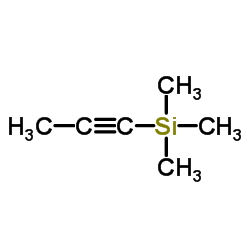 CAS#:6224-91-5
CAS#:6224-91-5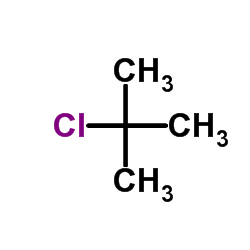 CAS#:507-20-0
CAS#:507-20-0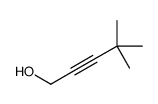 CAS#:52323-98-5
CAS#:52323-98-5 CAS#:558-37-2
CAS#:558-37-2 CAS#:115-11-7
CAS#:115-11-7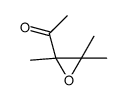 CAS#:15120-99-7
CAS#:15120-99-7 CAS#:2177-30-2
CAS#:2177-30-2 CAS#:4026-21-5
CAS#:4026-21-5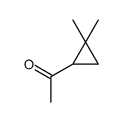 CAS#:872-75-3
CAS#:872-75-3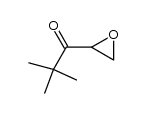 CAS#:128075-71-8
CAS#:128075-71-8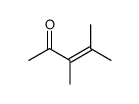 CAS#:684-94-6
CAS#:684-94-6 CAS#:40898-19-9
CAS#:40898-19-9 CAS#:75-98-9
CAS#:75-98-9 CAS#:13965-03-2
CAS#:13965-03-2![[(σ,π-CBu(t)=CMeCMe=CBu(t)Cl)PdCl]2 structure](https://image.chemsrc.com/caspic/418/64331-14-2.png) CAS#:64331-14-2
CAS#:64331-14-2